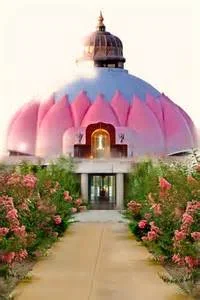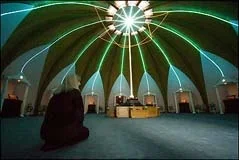
In the Lotus temple of Yogaville, VA in the meditation room there is no symbol as we know, it is totally bare. You are expected to sit on floor, and absolute silence is maintained.There is 12 light beam converging on the ceiling. These correspond to 12+ religious items, symbols, scriptures etc kept as a museum in the lower level.
But I understand the need for symbol to meditate.

Satchidananda Ashram - Yogaville was founded by Yogiraj Sri Swami Satchidananda in 1980. The ashram is the international organizational headquarters of Swami Satchidananda's documented teachings, located in the county of Buckingham, Virginia.
The primary vision of this world-traveled guru Yogiraj Sri Swami Satchidananda (1914-2002) was interfaith understanding as a vehicle to world peace. To this end, with his vision and much work from thousands of disciples and admirers, the LOTUS (Light Of Truth Universal Shrine) was constructed and inaugurated in 1986.
The shrine is shaped like a lotus flower, because it is a place in honor of the divine light, universal motif in all faiths and nonbelievers (science and the formula for light). Swami Satchidananda was familiar with the symbology of these aquatic flowers and their characteristic behavior of always opening and turning to face in the sun's direction.
Expert museum-quality displays are located in the lower chamber of the shrine, with sacred and beautiful authentic artifacts and scriptures from the world's major religions and those lesser known. The faiths represented in the shrine are African, Buddhism, Christianity, Hinduism (Sanatana Dharma, the Eternal Truths), Islam, Judaism, Native American, Shinto, Sikhism, Taoism.[1] By displaying a shrine to each of these religions, the temple is a living environment to honor Swami Satchidananda's teachings and motto of Integral Yoga, "Truth is One, Paths are Many."


